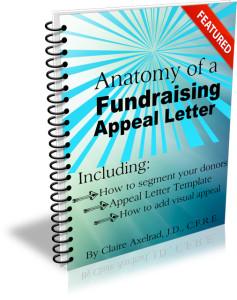
Stop horsing around! Use this attention-grabbing shortcut to get folks to read your appeal.
I always tell nonprofits writing appeal letters to tell a story. One compelling, exceptional story.
Actually, you need TWO compelling stories. We’ll get to that in a minute.
First…
Forget the data.
Forget the history of your organization.
Forget the explanatory prose about your processes.
Forget the list of all your programs.
Forget the superlatives about your longevity, awards, and so forth.
That stuff is compelling only to you. Donors don’t care. It’s just not relevant to them. At least not right away. Donors don’t have time to enter into all your self-indulgence.
Really, most folks don’t have time for you at all.
But…
Human beings are wired to enter into stories. It’s an attention-grabbing shortcut. We look at stories as a gift we’re excited to unwrap.
- What’s inside?
- What’s going on?
- What’s going to happen next?
- How do I feel about this?
- What does this make me think about?
- How is this relevant to my life?
- What can I do differently based on having read this story?
- Can I enter into this story?
- What role might I play?
- Could I even be the hero?
- Can I give this story a happy ending?
Stories are a Gift of Donor-Centered Content
Humans just can’t resist a good story.
Whereas… data? Explanatory prose?
Not so much.
In fact, it’s worse than that.
Data stops us dead in our tracks. We’re inclined to put up our dukes to refute data. We’re skeptical. Our mind begins to wander away from the narrative as we ponder whether or not the facts presented could possibly be correct.
This is not how you want prospective donors to process your letter.
The minute their attention wanders, you’ve likely lost the gift.
Because people today have very little time. If something isn’t immediately compelling and interesting they’ll put it aside. Maybe they’ll come back to it later. Probably not.
Persuaded you need to craft an appeal that’s all about the story?
Good!
Let’s get into how to do this and look at TWO stories your appeal needs to tell.
ONE: A Story Bridging the Gap between the Imperfect Present and an Imagined Future
You can’t just tell any old story.
It has to be emotional. Mind blowing. Thought provoking.
And it can’t be an afterthought. You can’t craft your appeal first, then layer in the story later. Your story is the heart and soul of the appeal.
Sit down with a few members of your team and brainstorm some stories you can tell. Stories about people who received help. Stories about people who need help. Stories replete with background that will break your heart and, ultimately, restore your hope. Stories that illuminate problems your readers will find relevant, and illustrate solutions they’ll find believable.
Toss aside the okay stories and search for the exceptional ones.
Don’t tell me you can’t tell the difference. You can. It’s the difference between a 5-star and a 2-star movie.
You need to emotionally move the reader of the story.
And not just a little bit.
How much?
Here’s a parallel from the retail world, as described by Bernadette Jiwa who blogs on The Story of Telling:
“Your product should bridge the gap between your customer’s imperfect present and her imagined future. And your marketing must tell the story of how her life will be changed in the presence of your product. Who is your customer before she encounters your product, and who is she after?”
Similarly, your nonprofit’s work should:
- Bridge the gap between your client’s present dismal fate and future shining success.
- Bridge the gap between your donor’s search for meaning and attainment of a higher purpose.
Help your reader imagine what the world, their community, or just one person’s life, will be like without their help. Then help them visualize how they can make a dramatic difference.
A puppy rescued.
A mother reunited with her child.
An almost extinct species given a new lease on life.
A teenager liberated from slavery.
A village given clean drinking water.
A veteran saved from living on the streets.
A local hospital prevented from closing its doors.
A frail senior given life-saving care.
Tell a story that moves your reader from darkness to light.
When that light bulb goes on in their head, that’s when they’ll be moved to give.
TWO: A Story about Your Donor as the Hero
As you are telling this story bridging from the sad to the happy… the miserable to the joyful… the hopeless to the hopeful… remember you’re simultaneously telling another extremely important story.
Your donor’s story.
Humans are on a continual existential quest for meaning.
We yearn to be part of something bigger. To have a greater purpose.
We want our story to matter!
Part of your job in crafting an exceptional appeal is to give your donor a great story to tell about themselves. A story about how the donor stepped in, saved the day, gave the story its happy ending and became the hero they always hoped they could be.
Reinforce this concept everywhere you can. Tell donor stories on your website, in your e-newsletter and on your blog. Sprinkle them into your annual report.
Humans copy other humans, especially when they’re being heroes!
One of Robert Cialdini’s principles of influence and persuasion is social proof. Whatever we see others doing, especially folks we admire, we tend to want to do those things as well.
So shine a light on your heroes.
This is apt to inspire other heroes to follow in their footsteps.
Continue Telling the Story
Your nonprofit’s story never ends.
Hopefully, your donor’s story also never ends.
Because the values you enact are the values your donor wants to enact. And by partnering with you, they’re able to continue simultaneously giving happy endings to your stories and their own.
Of course, you want to have a thank you letter all ready to go that reinforces your donor’s heroism.
Write your thank you letter just as soon as you finish writing your appeal.
In this way, you continue the telling of the story.
You also remind the donor this is a letter from you, and not just any nonprofit. This reinforces their decision to give to you, and gives them a warm glow.
“Sammy will go to sleep tonight with a full tummy, because you cared.”
“Ben will be the first in his family to graduate from college, because of your help.”
“You’re Mary’s hero because you helped her start her own business.”
“The cure for Alzheimer’s is one step closer, because of your generosity and compassion.”
“Did you know you’re our justice hero?”
Emotions Tell the Tale
Human behavior is ruled by emotions much more than logic.
In crafting your appeal, and all subsequent donor communications, always keep this in mind. However logical you’re tempted to be, remember that reason can’t work absent emotion.
Two Israeli psychologists, Daniel Kahneman and Amos Tversky, famously proved this in “Judgement under Uncertainty: Heuristics and Biases” and other studies in the 1970s. Kahneman went on to win the Nobel prize in economic science in 2002, and wrote the groundbreaking book “Thinking Fast and Slow” covering several decades of research in human decision making.
Humans generally make decisions quickly, acting from intuition before logic.
If we use data at all, it’s merely to justify our emotional decision.
One of Kahneman’s findings was that humans actually understand life as a story. And when it comes to their own story, they remember the peaks, valleys and endings. The experience in between somehow evaporates. We are our remembering selves, as flawed as that memory may be. It’s why we return over and over to family holidays and vacations, even if on balance they were miserable experience. We forget those parts.
Peaks and endings are important.
Your job is to offer your donors opportunities to feel the peaks of joy that come from giving a story a happy ending.
Your nonprofit’s story, and their own.
Want to Learn More to Make Your Appeal Compelling?

This 62-page guide will take your appeal letter from run of the mill to out of the ballpark!
Grab my Anatomy of a Fundraising Appeal + Sample Template. It’s a simple, step-by-step guide to crafting a killer appeal letter.
- Use it to craft your compelling appeal letter.
- Use it to create a fundraising offer your donor won’t be able to refuse.
- Use it to tweak your year-end fundraising.
- Use it all year.
Thank you for all you do to make our world a better, more caring place. Now go forth and spread the joy of giving!





